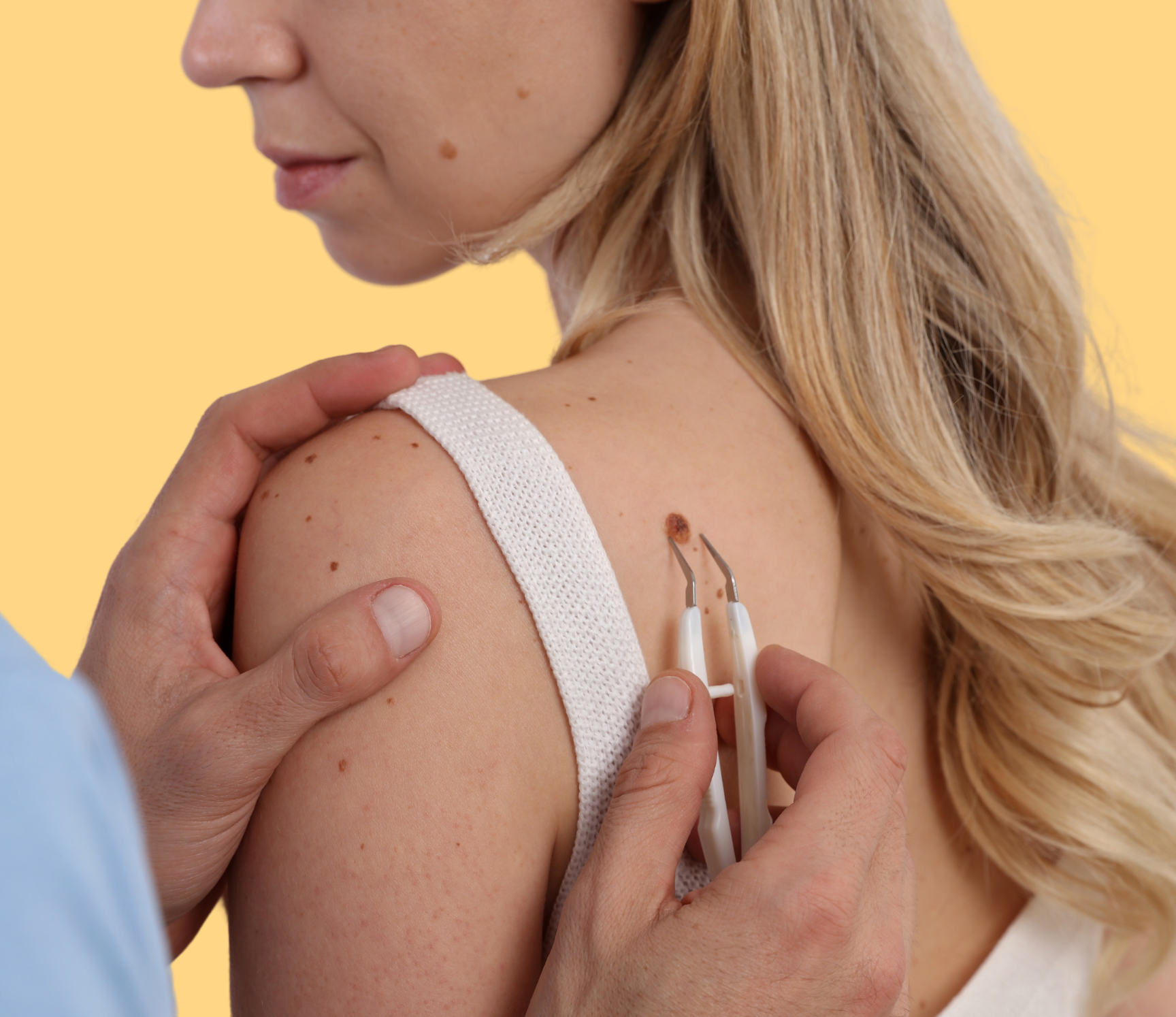
Skin tag removal and mole removal are medical procedures used to remove
benign skin growths from the skin's surface.

Skin tags and moles are common skin growths that can appear anywhere on the body. While they are usually harmless, they can sometimes become irritated or catch on clothing or jewelry, causing discomfort. Additionally, some people may choose to remove skin tags or moles for cosmetic reasons.
There are several methods for removing skin tags and moles, including
cutting, freezing, and burning. The method chosen will depend on the location and size of the growth, as well as
the patient's personal preference. In most cases, the procedure is performed on an outpatient basis and
takes only a few minutes to complete.
After the procedure, the treated area may be sore and tender for a few days,
and a bandage may be applied. Over-the-counter pain medication can be used to manage any discomfort. The treated
area may also be red, swollen, and have a small scab for several days, but these side effects will generally
subside on their own. It is important to keep the area clean and dry and to avoid picking at the scab.
While skin tag removal and mole removal are generally safe procedures, there
is a small risk of infection, scarring, and pigmentation changes. These risks can be minimized by following the
post-procedure care instructions provided by the dermatologist.
It is important to seek the advice of a dermatologist before undergoing
any skin growth removal procedure, as they will be able to determine the underlying cause of the growth and
determine the best method for removal. They will also be able to provide a personalized care plan to help
minimize the risk of complications and ensure a smooth recovery.